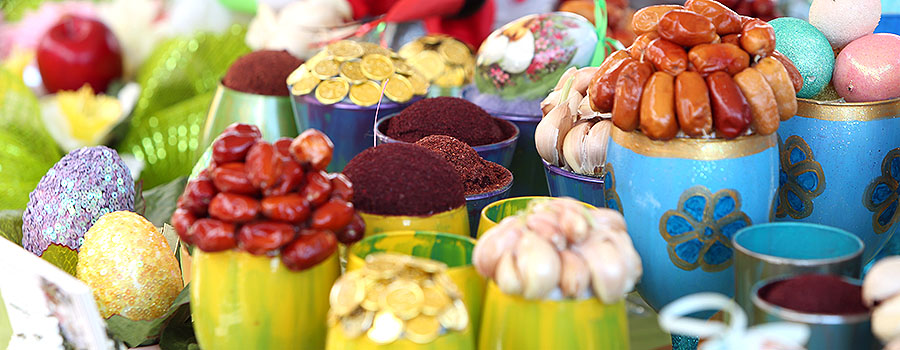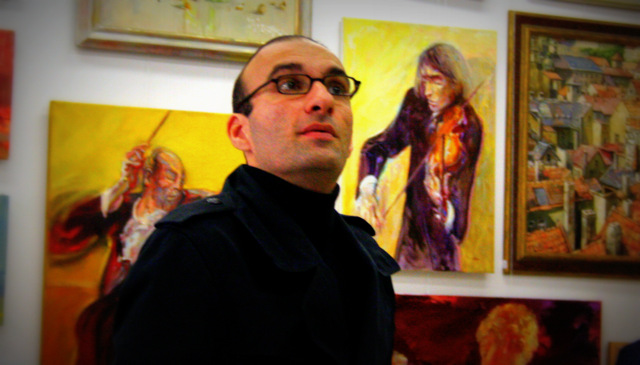Kourosh Ziabari – Centre for Journalism: What is Nowruz and how does it exactly work? It’s a question asked in many different ways and many different responses have been given to it. To sum up, Nowruz (translated verbatim as “new day”) is the name of the Iranian New Year and feasts and festivals associated with it. It’s celebrated by some 300 million people worldwide, including in Iran, Afghanistan, Azerbaijan, Iraq, Tajikistan, Turkmenistan, Turkey and by Iranian diaspora in Europe and North America, Australia and elsewhere. Nowruz is the day of the vernal equinox and marks the beginning of Spring in the Northern Hemisphere. It usually falls on 21st March, which is a special day, because in 1970, the first Earth Day proclamation was issued by the late Mayor of San Francisco Joseph Alioto on a 21st March.
For two weeks since the moment of vernal equniox, which is marked with fireworks and smokeballs and some limited expressions of happiness, congratulations and smiles on Iran’s state TV and the more expansive, unlimited versions of the same on Iranian TV stations outside Iran, what happens is celebration, families paying visit to each other, children and young adults gaining weigh due to the miscellany of delicious dishes, candies, sweeties and dried nuts, charities getting empowered as good deeds are encouraged more, good music and good films creating some cash as more regular cinema-goers find worthwhile movies to watch and bookworms find the best of their favourite authors and translators on sale, industries and schools hibernate and more friendly and smiling faces can be detected on the streets.
The United Nations has declared 21st March International Nowruz Day. Nowruz needs to be preserved; otherwise, it’s prone to exctinction. The vernacular language spoken in my county in northern Iran is recognised by the UNESCO as an endangered language (it’s different from Persian) because its speakers consider it of low social eminence and prestige and don’t communicate with each other in Guilaki. So, a language with can be potentially spoken by some 2.5 million people is a “dead language”: instead of being preserved and treasured, it was mocked and ridiculed and now doesn’t have any social and political and lingual influence.
Nowruz is the same. It’s a set of feasts and celebrations that connects the hearts and minds of millions of people at the same time in an inspirational and spiritual way. So, those who have a responsibility to protect and uphold it should refuse to take its preservation lightly. It’s like an ancient building which needs its own protection and maybe even “designated peoeple” to save it from going extinct. In a society where happiness and celebration is not a virtue, even such a longstanding and ancient tradition as Nowruz can evaporate and be consigned to oblivion. On the contrary, Nowruz can defeat the culture of fear and dejection by resisting and standing firmly.
I interviewed Dr Arshin Adib-Moghaddam, a Professor in Global Thought and Comparative Philosophies and Chair of the Centre for Iranian Studies at the London Middle East Institute who has appeared on CNN, Al-Jazeera and published on The Guardian, The Independent, openDemocracy and The Daily Star (Beirut) to ask a few questions about Nowruz.
Q: A very simple and basic question: What is Nowruz? Why is it important for Iranians across the world and why do they do their best, literally going through water and fire, to make sure they have the most beautiful Haft-Seen and the most jolly New Year celebration each year?
A: To my mind, Nowruz releases a continuous spirituality that is imbued with human compassion, cultural dialogue and a form of cosmopolitan empathy that is very typical for Iran. The aesthetics of the haft-seen act as a metaphorical frame to this celebration of life. Today, Nowruz continues to symbolise a “Geist” in an increasingly spiritless world.
Q: You have taught students of different nationalities at SOAS. Have you been asked questions about Nowruz? What are those questions? And how have you tried to respond?
A: Indeed, I have encountered students and academic colleagues from all over the world. SOAS is a unique institution in this regard. In the Department of Politics and International Studies, where I am based, I have been repeatedly asked about Persian culture, including the meaning of Nowruz and its role in contemporary life in Iran. The questions tend to relate to the cultural significance of the celebrations. Many people seem to reduce Nowruz to the Zoroastrian component of Iran’s ancient meanings which I have traced in “Psycho-nationalism”. However, as any other concept, Nowrouz too has metamorphosed into something beyond its origins. An archaeology of its different meanings reveals an ancient genealogy that defies reductions based on religious identity or politics. Nowruz radiates beyond such confinements. It is as much trans-geographical as it is trans-cultural, i.e. it has the unique power to galvanise us beyond strict definitions of “identity”.
Q: Nowruz has been a bit politicized in the recent decades, and following the Islamic Revolution of 1979, religious authorities usually resisted the public manifestations of Nowruz and other festivals connected to it, such as Chaharshanbe Suri. What are the reasons?
A: The reasons are ideological. The revolution was a unique moment in human history in its explosive impact on Iran and the world. There are only a few comparable events in global affairs, including the French, Russian, Chinese and Cuban revolutions which all happened in the 20th century, that is in the hubristic laboratories of “modernity”. A revolutionary explosion, by definition and whether one likes it or not, scatters the status quo. Nowrouz was a target of the revolutionaries because it was perceived to be a part of the political set up of the ancient regime of the Shah. However, if we are to connect our thoughts to the previous answers, then we can understand why subduing the spirit of Nowrouz has been impossible. Revolutions, even those driven by a strong spiritual conviction as in Iran in 1979, may be able to shatter material-institutional structures, but they will always stop short in overcoming deeply ingrained meta-physical concepts such as Nowrouz. Nowrouz is imbued with meta-physics; by definition that means Nowrouz goes beyond our physical existence or their material manifestations in politics and ideology. This is what I meant by the transidentitarian power of spiritual concepts such as Nowrouz. They hover beyond the vulgarity of politics like a beautiful synergistic sphinx. Incidentally, subduing Nowrouz ideologically is as impossible as confining the meta-physical significance of the so called Hussein paradigm for very comparable reasons. None of my answers can be misconstrued to make a normative-ideological case. They are purely conceptual and analytical.
Q: Nowruz has always been referred to as the harbinger of peace in a region imbued with divides and conflicts. Do you think Nowruz has been successful in bringing the conflicting nations of the Middle East closer to each other? Or alternatively, do you think these nations have been successful in building upon Nowruz to make peace and eliminate hostilities?
A: The spirit of Nowrouz could be a very potent harbinger for what I have called a “cultural diplomacy” for the region. I have recently co-signed a letter to the UN General Secretary Antonio Guterres to that end. The content of the letter was published on the front-page of the Tehran Times. Yet alas such initiatives don’t find their way onto the frontpages of outlets such as the New York Times or even The Guardian of London. Instead of learning the language of peace and cultural tolerance, we are continuously bombarded by psycho-nationalism, the real source of enmity, war and intolerance on a global scale. How can the poet, artists or writer talk to someone such as Donald Trump? His Nowrouz messages to Iranians was full of venom and spite. We are living during a period that is culturally depleted. On the one side we have Trump, in politics, on the other Kim Kardashian, in popular culture. It is very difficult to translate anything mildly intellectual or cultural to such constituencies. Of course, the battle must continue despite of the current predicaments.
Q: What do you think about academic training on Nowruz, such as including chapters in curricular books or giving lectures to international students? Does it help with raising awareness of an international occasion recognised by the United Nations, which is not sufficiently known?
A: I think this a great idea and I would be entirely supportive.
This interview was originally published on Centre For Journalism.


